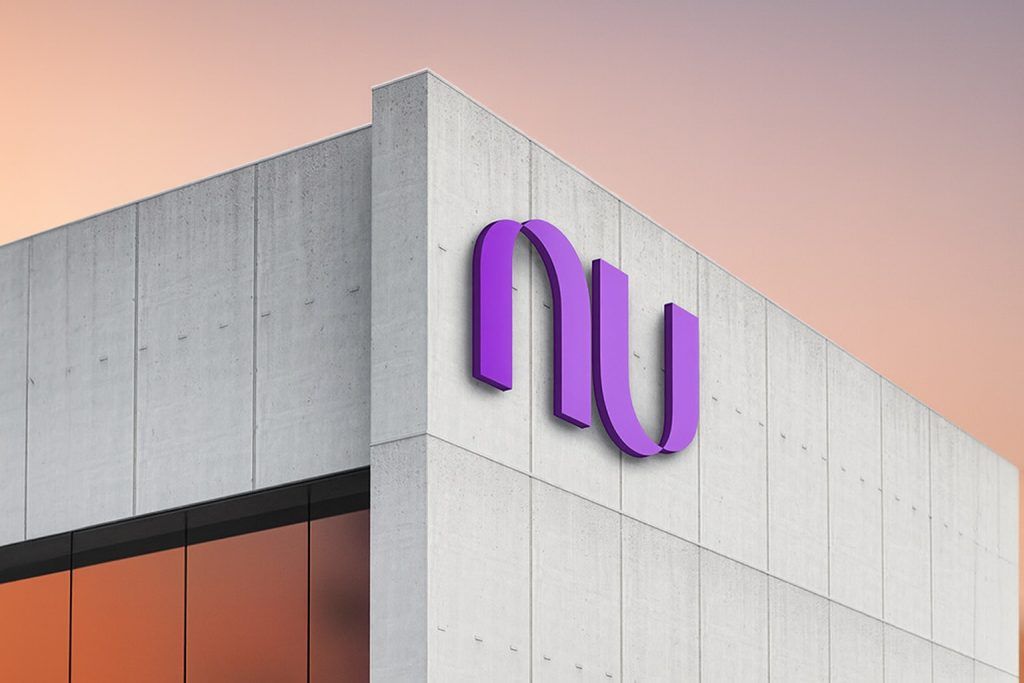PDD Holdings Inc. (NASDAQ: PDD), the Chinese e‑commerce giant behind Pinduoduo and global discount app Temu, remains firmly in the spotlight on Wednesday, 19 November 2025. Investors are still digesting its Q3 2025 earnings, a sharp post‑results sell‑off, and a flurry of fresh analyst reports and corporate updates hitting the tape today. [1]
Below is a detailed look at how PDD stock is trading today, what the latest 19 November news is saying, and what it could mean for traders and long‑term shareholders.
PDD stock price today: modest drop after a 7% earnings plunge
As of the latest quote on Wednesday, PDD shares are trading around $117.77, down roughly 1.5% on the day.
That move comes on the heels of a 7.3% slump on Tuesday, when the market reacted to Q3 results that showed slower revenue growth and intense competitive pressure. AASTOCKS reports that PDD’s U.S. listing dropped 7.3% at Tuesday’s close after quarterly revenue of 108.28 billion yuan came in just below market expectations of about 108.41 billion yuan, even though adjusted EPS of 21.08 yuan comfortably beat forecasts near 16.8 yuan. [2]
MarketBeat notes that the ADRs opened today around $119.58, with a 12‑month range of roughly $87.11 to $139.41, a market value of about $166 billion, a trailing P/E ratio near 13, and a low beta of 0.47, underlining PDD’s combination of big‑cap scale and relatively muted day‑to‑day volatility compared with many tech peers. [3]
Despite the recent drop, various data providers estimate PDD’s market value in the $166–170 billion range, with a trailing P/E in the low‑teens, leaving the stock still well above its 2025 lows. [4]
Q3 2025 earnings: strong profits, slower growth
PDD’s Q3 2025 numbers, released on 18 November 2025, are the main driver of this week’s volatility.
- Revenue: 108.28 billion yuan (≈ $15.21 billion), up 9% year‑on‑year
- Operating profit: 25.03 billion yuan (≈ $3.52 billion), slightly higher than a year ago
- Net income attributable to ordinary shareholders: 29.33 billion yuan (≈ $4.12 billion), up 17%
- Non‑GAAP net income: 31.38 billion yuan, up 14%
These figures come from PDD’s unaudited Q3 release and are summarised by Quiver Quantitative. [5]
Caixin Global’s tech brief points out that revenue growth had been slowing for five consecutive quarters, from 44% in Q3 2024 to 24%, 10% and 7% through Q2 2025, before ticking back up to 9% this quarter – a rebound, but far from the hyper‑growth Temu enjoyed in its early international rollout. [6]
On the balance‑sheet side, PDD remains a cash machine:
- Cash, cash equivalents and short‑term investments: ~423.8 billion yuan (≈ $59.5 billion) as of 30 September 2025, up from 331.6 billion yuan at year‑end 2024. [7]
That war chest gives management significant room to keep funding subsidies, overseas expansion and—if it chooses—buybacks or dividends. Bernstein notes that PDD holds more cash than debt, strengthening the case for potential shareholder returns. [8]
The margin picture is more nuanced:
- Cost of revenue increased 18%, outpacing revenue growth.
- R&D spending jumped 41% year‑on‑year as PDD ploughed money into technology and platform upgrades. [9]
Different data sets show slightly different comparisons versus consensus. Caixin says the revenue figure slightly beat market expectations, while AASTOCKS and other sources frame it as a marginal miss against estimates just above 108 billion yuan. All agree, however, that adjusted EPS comfortably topped forecasts, underlining PDD’s ability to generate profit even as growth slows. [10]
What’s new on 19 November 2025: today’s key PDD headlines
Investors woke up today to a dense cluster of fresh information about PDD, including:
- A detailed Q3 2025 earnings call transcript providing colour on strategy and competition. [11]
- Multiple new analyst notes – including a downgrade and several target cuts – that sharpen the debate around PDD’s valuation. [12]
- An announcement of a virtual annual general meeting (AGM) scheduled for 19 December 2025. [13]
- Updated commentary on institutional ownership, showing state pension and global asset managers ramping up positions. [14]
Let’s break those down.
1. Bernstein downgrade: from “Outperform” to “Market Perform”
Bernstein SocGen lowered its rating on Pinduoduo/PDD from Outperform to Market Perform, cutting its price target from $140 to $135. [15]
Key points from the note:
- Bernstein argues that PDD’s domestic business is maturing, citing recent flat daily active users and time spent as “problematic for a business model reliant on top‑funnel dominance.” [16]
- Q3 revenue of 108 billion yuan was modestly ahead of Bernstein’s own internal forecast, and operating profit beat its estimate by nearly 19%, underscoring still‑strong profitability. [17]
- However, Online Marketing Services – PDD’s high‑margin ad business – grew only 8.1% year‑on‑year, which the firm sees as underperforming GMV and hinting that merchants are shifting ad budgets to rivals like Alibaba and JD.com. [18]
- The report says PDD should start “doing grown‑up company things,” such as meeting more frequently with investors and returning cash to shareholders, given its large net cash position. [19]
Despite the downgrade, Bernstein still describes PDD as undervalued, with many analysts maintaining a Strong Buy consensus and modelling further upside from current levels, albeit with higher risk around domestic growth. [20]
2. Goldman Sachs: “mixed” quarter, lower target but Buy rating intact
A research note summarised by AASTOCKS shows Goldman Sachs calling PDD’s Q3 results “mixed”. [21]
- On the positive side, operating profit rose year‑on‑year for the first time this year, and Temu’s unit economics and equity‑income contributions beat forecasts. [22]
- On the negative side, online advertising revenue growth fell into single digits for the first time in PDD’s history, and significantly missed Goldman’s expectations – a key reason the broker believes the stock sold off so hard. [23]
- Goldman cut its price target from $157 to $147, but kept a Buy rating, suggesting that PDD’s low earnings base in 2026–27 could allow for a valuation re‑rating if growth stabilises and Temu continues to improve its profitability. [24]
3. Benchmark and BofA: more constructive but cautious
Not all the new notes are gloomy.
- Benchmark reiterated a Buy rating and $160 price target, pointing to “moderate revenue growth” supported by domestic investments and a healthy quarter‑over‑quarter increase in Temu’s international business, particularly in Europe, where Temu is becoming an increasingly important growth driver. [25]
- Benchmark’s analysis highlights that PDD generated around $58.8 billion in revenue over the last twelve months, growing at about 12.5%, while maintaining gross margins above 56% and return on equity near 31%, backed by a strong net‑cash position and a current ratio around 2.4. [26]
Meanwhile, BofA Securities trimmed its target but stayed neutral:
- BofA’s latest update lowers its target price from $141 to $140, while keeping a Neutral rating. [27]
- The bank describes Q3 as a “strong profit beat”, driven by better‑than‑expected adjusted operating income and interest income, but notes ongoing risks from tariff changes, regulatory overhangs around Temu, and uncertainty in China’s consumer environment. [28]
Taken together, these notes show a Street increasingly split: some see a profitable, cash‑rich platform with long‑run upside, while others focus on slowing growth and rising competition.
4. Street consensus after today’s notes
GuruFocus aggregates 35 analysts’ 12‑month price targets at an average of about $144.82, implying just over 20% upside from the pre‑sell‑off price around $119.58. The broader brokerage consensus equates to an “Outperform”‑type recommendation. [29]
MarketBeat’s data, based on a somewhat different analyst set, shows a consensus rating of “Hold” with an average target of roughly $137.82, still above today’s price but reflecting more caution. [30]
In short: valuation models remain supportive on paper, but the margin of safety is shrinking as growth decelerates and regulatory risks build.
5. Corporate governance: virtual AGM set for 19 December
A TipRanks company announcement confirms that PDD will hold its 2025 Annual General Meeting virtually on 19 December 2025. Shareholders will vote on the re‑election of six directors and other standard business items, with proxy materials distributed online to cut costs and environmental impact. [31]
The AGM also arrives at a time when several analysts, including Bernstein, are explicitly calling for clearer capital‑allocation plans and potential cash returns given PDD’s enormous liquidity. [32]
6. Institutional flows: state pension and global managers add PDD
A new piece from MarketBeat, dated 19 November 2025, highlights fresh 13F data: [33]
- The Commonwealth of Pennsylvania Public School Employees’ Retirement System boosted its PDD stake by 317.6% in Q2, adding 28,773 shares to reach 37,833 shares worth about $3.96 million at the time of filing.
- Other major investors such as Massachusetts Financial Services, Geode Capital Management, and Mitsubishi UFJ Trust & Banking all significantly increased holdings.
- Overall, institutional investors now own about 39.8% of PDD’s shares, according to the same report.
These filings are backward‑looking, but they indicate that large, long‑horizon investors were still adding exposure heading into the second half of 2025, despite the evident slowdown in revenue growth. [34]
Why PDD stock is under pressure despite strong profits
So why is the stock down today, after already tumbling yesterday, when the profit numbers look so robust?
- Ad monetisation is slowing.
- Online marketing, historically PDD’s high‑margin engine, grew only around 8% year‑on‑year in Q3—its first ever single‑digit growth rate and a clear miss versus some analysts’ expectations. [35]
- That slowdown suggests brands and merchants are experimenting more with advertising on Alibaba and JD.com, eroding one of PDD’s key competitive advantages. [36]
- Management is signalling ongoing volatility.
- In both the press‑release commentary and the Q3 earnings call, PDD’s leadership emphasised that revenue growth is moderating as competition intensifies and that merchant support initiatives and ecosystem investments will likely cause further quarter‑to‑quarter fluctuations in financial results. [37]
- Regulatory and trade risks are front‑of‑mind.
- PDD is re‑working Temu’s international strategy in response to tighter rules on the U.S. de minimis tariff exemption that previously allowed low‑value parcels to enter duty‑free, as well as scrutiny from new global competitors and regulators. [38]
- Growth is slower, even if not collapsing.
- After a run of eye‑watering growth, revenue is now increasing at single‑digit rates. Caixin notes the stepdown from 44% to 24%, 10% and 7% growth over recent quarters, with Q3’s 9% bounce representing a stabilisation rather than a re‑acceleration. [39]
Put together, this explains why a company posting double‑digit earnings growth and sitting on over 400 billion yuan of cash can still see its stock slide 7% in a day and remain weak today. [40]
Technical picture: volatility zones in focus
Short‑term traders are also reacting to the technical setup.
An AI‑driven report from StockTradersDaily this morning characterises PDD’s near‑ and mid‑term sentiment as “weak”, even while its long‑term trend remains “strong”. [41]
The analysis sketches out several “volatility zones” for PDD:
- A long‑side entry zone around $114–115,
- Upside targets in the high $120s to around $141,
- Tight stop‑loss levels just below support, and
- Separate triggers for momentum breakout and short‑side hedging strategies. [42]
These are not guarantees and are geared toward experienced traders comfortable with sharp swings, but they underline that PDD has now become a tactical trading vehicle as well as a long‑term story stock.
How different investors might read today’s PDD news
Long‑term growth investors may focus on questions like:
- Is 9% revenue growth a new normal or merely a pause before re‑acceleration, driven by deeper Temu penetration and better monetisation of Pinduoduo’s user base? [43]
- Can PDD keep its strong profitability if it sustains elevated spending on merchant subsidies, R&D and international expansion? [44]
- Will management eventually choose to return part of its 423.8 billion‑yuan cash pile via buybacks or dividends, as some analysts are pushing for? [45]
Value‑oriented investors are likely to weigh:
- A low‑teens trailing P/E and sizeable net cash versus slowing growth and regulatory uncertainty. [46]
- Analyst targets that, on average, imply mid‑teens to low‑20s percentage upside from pre‑earnings levels, balanced against increased dispersion in ratings (from Buy/Outperform down to Neutral/Market Perform). [47]
Short‑term traders, meanwhile, may treat today’s relatively small decline after yesterday’s big drop as part of a price‑discovery phase:
- Some will key off support around the low‑$110s and resistance in the $120–130 region flagged by technical research. [48]
- Others will watch broader tech and China‑ADR sentiment, particularly with major U.S. tech earnings (like Nvidia) also in focus this week, which can spill over into high‑beta names such as PDD. [49]
Key takeaways for PDD stock on 19 November 2025
- Price action: PDD trades around $117–118, down about 1.5% today, after a 7.3% post‑earnings slide yesterday. [50]
- Fundamentals: Q3 2025 delivered 9% revenue growth and mid‑teens earnings growth, plus another big jump in cash, but confirmed a clear slowdown from the breakneck pace of previous years. [51]
- Street reaction: Bernstein downgraded to Market Perform, Goldman cut its target but kept Buy, BofA trimmed its target and stayed Neutral, while Benchmark reaffirmed Buy with a $160 target—illustrating a wide spread of opinions. [52]
- Ownership and governance: Institutions, including a large U.S. public pension fund, have been adding PDD, and a virtual AGM on 19 December could bring more clarity on capital allocation. [53]
- Risk/reward: With a cash‑rich balance sheet, low‑teens P/E and substantial regulatory and competitive uncertainties, PDD looks like a classic high‑quality but controversial growth name where sentiment—and not just numbers—will drive the next big move. [54]
Disclaimer: This article is for informational purposes only and does not constitute investment advice, a recommendation to buy or sell any security, or a substitute for independent financial research. Always do your own due diligence or consult a licensed financial adviser before making investment decisions.
References
1. www.quiverquant.com, 2. www.aastocks.com, 3. www.marketbeat.com, 4. www.marketbeat.com, 5. www.quiverquant.com, 6. www.inkl.com, 7. www.quiverquant.com, 8. m.ca.investing.com, 9. www.quiverquant.com, 10. www.inkl.com, 11. www.insidermonkey.com, 12. m.ca.investing.com, 13. www.tipranks.com, 14. www.marketbeat.com, 15. m.ca.investing.com, 16. m.ca.investing.com, 17. m.ca.investing.com, 18. m.ca.investing.com, 19. m.ca.investing.com, 20. m.ca.investing.com, 21. www.aastocks.com, 22. www.aastocks.com, 23. www.aastocks.com, 24. www.aastocks.com, 25. www.investing.com, 26. www.investing.com, 27. www.gurufocus.com, 28. www.tipranks.com, 29. www.gurufocus.com, 30. www.marketbeat.com, 31. www.tipranks.com, 32. m.ca.investing.com, 33. www.marketbeat.com, 34. www.marketbeat.com, 35. m.ca.investing.com, 36. m.ca.investing.com, 37. www.quiverquant.com, 38. www.investors.com, 39. www.inkl.com, 40. www.quiverquant.com, 41. news.stocktradersdaily.com, 42. news.stocktradersdaily.com, 43. www.quiverquant.com, 44. www.quiverquant.com, 45. www.quiverquant.com, 46. www.marketbeat.com, 47. www.gurufocus.com, 48. news.stocktradersdaily.com, 49. simplywall.st, 50. www.aastocks.com, 51. www.quiverquant.com, 52. m.ca.investing.com, 53. www.marketbeat.com, 54. www.quiverquant.com










